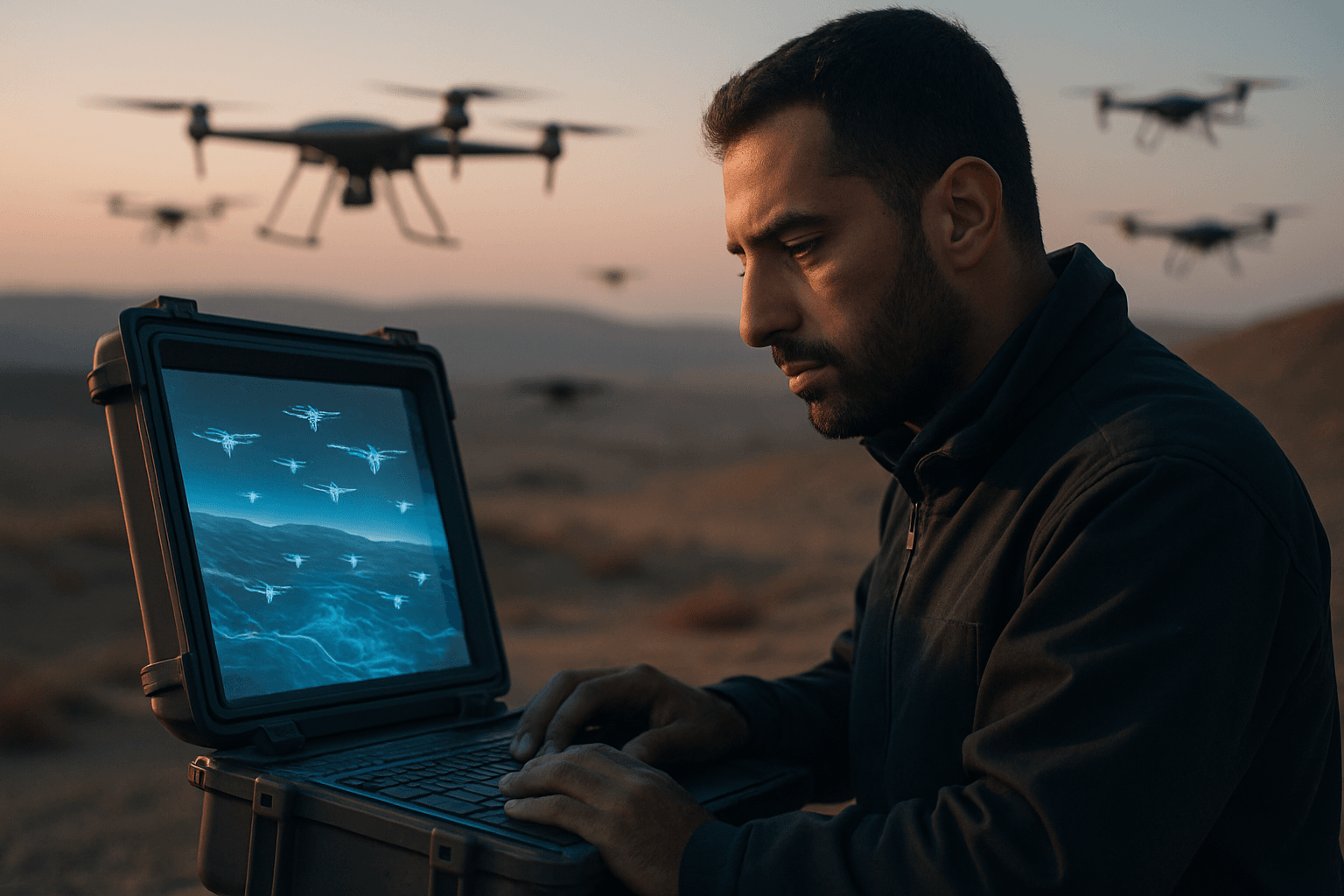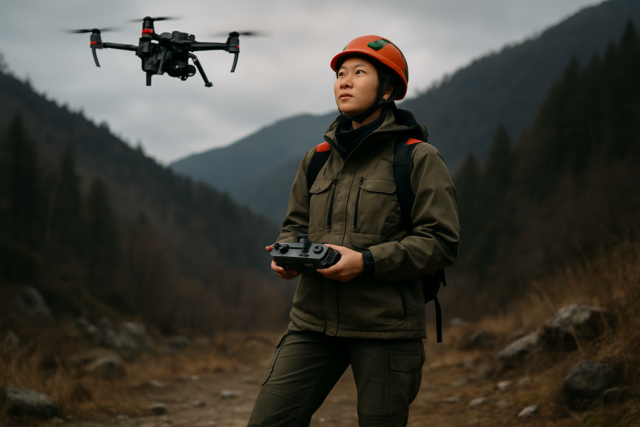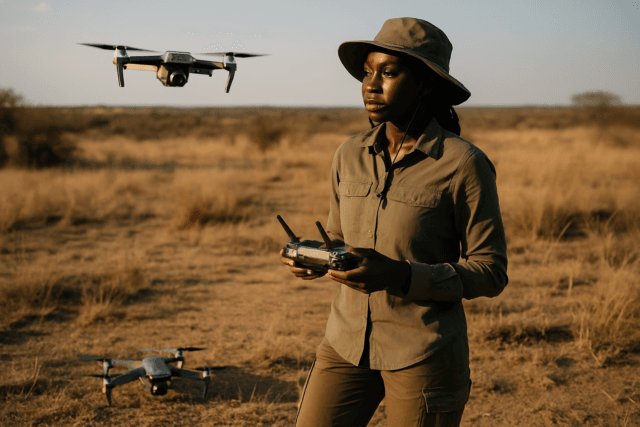Traditional surveillance methods often struggle with vast areas, dynamic environments, and the need for persistent, multi-faceted monitoring. From sprawling borders to critical infrastructure and disaster zones, achieving comprehensive oversight with conventional tools is resource-intensive and often limited in scope. Enter drone swarms: a revolutionary technological advancement that promises to redefine how we approach area surveillance and security. By deploying multiple Unmanned Aerial Vehicles (UAVs) to work in concert, these sophisticated systems offer an unprecedented level of coverage, resilience, and intelligence, transforming the landscape of modern monitoring.
What Are Drone Swarms for Surveillance?
A drone swarm refers to a coordinated group of autonomous UAVs that operate collectively to achieve a common objective, often with minimal human intervention. Unlike a collection of individually piloted drones, a swarm functions as an interlinked, unified system, sharing data in real-time and making collective decisions. The concept draws inspiration from the collective behaviors observed in nature, such as flocks of birds or schools of fish, where simple individual rules lead to complex, intelligent group actions. The U.S. Government Accountability Office (GAO) defines drone swarm technologies as coordinating at least three and up to thousands of drones to perform missions cooperatively with limited need for human attention and control.
These swarms can vary in sophistication, ranging from centralized control where human operators manage individual drones, to decentralized control where drones communicate and collaborate based on shared information, or even fully autonomous systems powered by artificial intelligence (AI) that operate without further human intervention.
Advantages of Drone Swarms Over Single UAVs
Deploying a swarm of drones for surveillance offers significant advantages compared to relying on a single UAV:
- Comprehensive and Rapid Coverage: Swarms can cover vast areas much faster than a solo drone by splitting tasks across different sections of an area or assigning various functions (e.g., thermal scanning, visual monitoring) to individual drones. This enables immediate and extensive oversight of large expanses.
- Enhanced Redundancy and Robustness: If one drone in a swarm fails or is compromised, the remaining units can “self-heal” and continue the mission without significant disruption. This distributed nature ensures mission survivability and reliability, a critical factor in dynamic or high-risk environments.
- Operational Versatility and Data Collection: Equipped with a variety of advanced sensors, including high-resolution cameras, infrared technology, and LiDAR, drone swarms can operate effectively day or night and collect more comprehensive data simultaneously. This multi-sensor approach enhances the accuracy of detection and tracking.
- Scalability and Adaptability: The size of a drone swarm can be easily scaled from a few UAVs to thousands, allowing for tailored security measures that can adapt to missions of varying complexity and cover different scales of properties. Swarms can also adjust in real-time to avoid obstacles and environmental factors.
- Stealth and Agility: The compact size and maneuverability of individual drones within a swarm can make them difficult for intruders to detect and evade, adding a stealthy layer to security operations.
- Cost-Effectiveness: While initial setup can be complex, in the long run, drone swarms can be a more cost-efficient solution compared to extensive human security personnel or manned aircraft for persistent, large-area surveillance.
Key Technologies Enabling Drone Swarms
The rapid evolution of drone swarm capabilities for surveillance is driven by advancements in several core technologies:
Artificial Intelligence (AI) and Machine Learning (ML)
AI and ML are foundational to autonomous drone swarms, enabling them to make decisions, learn from their environment, adapt to new situations, and perform complex tasks without constant human intervention. AI excels in processing the significant data collected by drones, rapidly producing actionable insights and autonomously designing and performing actions, including optimally dividing tasks among drones based on their location, function, and abilities.
Swarm Intelligence Algorithms
Inspired by natural systems, these algorithms allow drones to operate collectively, communicate in real-time, and adapt to dynamic conditions. They govern how individual drones follow simple rules to achieve complex, coordinated group behaviors, crucial for tasks like synchronized patrol routes, collaborative search, and target tracking.
Advanced Sensing Technologies
For comprehensive surveillance, drones are equipped with an array of sensors. These include high-resolution cameras for visual data, infrared and thermal imaging for night operations or detecting heat signatures, and LiDAR (Light Detection and Ranging) for 3D mapping and obstacle avoidance. These sensors provide the necessary data for environmental mapping, object identification, and real-time situational awareness.
High-Speed Communication Networks
Effective coordination within a swarm relies on robust, real-time communication among drones and with a control center. High-speed communication technologies, such as 5G and 6G networks, are improving real-time data sharing and command execution, allowing drones to maintain their position relative to one another and synchronize movements even in complex environments.
Edge Computing
Modern swarm drones increasingly incorporate edge computing, allowing them to process information locally rather than relying solely on remote data centers. This significantly reduces delays in decision-making, enabling drones to react instantly to threats and improving situational awareness and coordination, especially in environments where GPS signals or communication networks might be jammed.
Diverse Applications in Surveillance and Security
The capabilities of drone swarms translate into a wide range of applications for comprehensive area surveillance across various sectors:
Border and Perimeter Security
Drone swarms can provide continuous aerial coverage of extensive borders or critical facility perimeters, detecting unauthorized intrusions and monitoring activity in real-time. Their ability to operate autonomously and cover large expanses from multiple angles offers a significant advantage over traditional static sensors or manned patrols.
Emergency Management and Disaster Response
In emergency scenarios, swarms can quickly map affected areas, locate missing persons, track and control the spread of wildfires, and assess damages, delivering critical information to first responders. They can navigate challenging terrains and provide aerial support in hazardous environments without endangering human lives.
Infrastructure Monitoring
Drone swarms are ideal for inspecting large-scale infrastructure such as pipelines, bridges, power lines, and expansive commercial facilities. They can autonomously assess the health of structures, identify potential weaknesses, and perform safety inspections, often in difficult-to-reach areas.
Large Event Security and Crowd Monitoring
For public events, concerts, or large gatherings, drone swarms can monitor crowds, identify anomalies, and track movement patterns, providing law enforcement and security teams with enhanced situational awareness. This helps in early threat detection and efficient response coordination.
Environmental Monitoring
Swarms can quickly cover vast natural areas to track environmental changes, monitor wildlife, assess the impact of natural disasters, and even detect crop diseases in agriculture. This provides detailed environmental data for analysis and intervention.
Road and Maritime Surveillance
For road networks, drone swarms can detect and track ground vehicles, identify traffic anomalies, and enhance safety by monitoring traffic flow and accident rates. In maritime contexts, they can revolutionize naval surveillance by patrolling vast coastlines, monitoring maritime zones, and detecting threats such as smuggling or illegal activities, offering extensive area coverage and relaying real-time data.
Challenges and Ethical Considerations
Despite their immense potential, the widespread adoption of drone swarms for surveillance faces several challenges and raises significant ethical concerns:
Technical Complexities and Vulnerabilities
- Coordination and Control: Managing a swarm effectively requires sophisticated coordination and control systems, especially in dynamic and uncontrolled environments.
- Interference and Jamming: Drone swarms rely heavily on wireless communication, making them susceptible to interference or jamming, which could compromise their effectiveness or lead to loss of control.
- Environmental Limitations: Adverse weather conditions can impact drone operations, necessitating robust contingency plans.
- Cybersecurity Risks: The decentralized nature and intricate communication networks of swarms create new attack vectors. A single compromised drone could potentially manipulate the entire swarm, jeopardizing data privacy, operational integrity, and even physical safety through coordinated attacks or data breaches.
Ethical and Societal Concerns
- Privacy Invasion: Drones, particularly swarms with their pervasive coverage, challenge traditional notions of personal privacy. Equipped with high-resolution cameras and other sensors, they can gather extensive data on individuals without their knowledge or consent, raising significant privacy issues and potentially leading to a “chilling effect” on free speech.
- Data Misuse and Security: There is a concern about how collected data is stored, who has access to it, and how it might be used in the future. Weak encryption or insufficient cybersecurity protocols can lead to unauthorized access or data leaks.
- Lack of Accountability and Transparency: The increasing autonomy of drone swarms makes it challenging to establish clear accountability standards and regulatory frameworks, particularly when algorithms make decisions without direct human intervention.
- Algorithmic Bias: The potential for algorithmic bias in deployment could exacerbate existing social inequalities and injustices, especially if surveillance disproportionately targets certain communities.
- Weaponization and Misuse: The dual-use nature of drone swarm technology means it can be adapted for malicious purposes, including coordinated attacks by non-state actors or in military contexts, raising serious ethical dilemmas about the potential for increased conflict and reduced human oversight in warfare.
The Future of Drone Swarm Surveillance
The field of drone swarm technology is rapidly maturing, with continued advancements in AI, machine learning, and communication protocols. Experts anticipate further integration of AI for more complex autonomous tasks, improved computer vision, and advanced decision-making capabilities. The global market for swarm intelligence is projected to see significant growth, driven by the need for enhanced intelligence gathering, big data solutions, and risk reduction.
As drone swarms become more sophisticated, they will likely integrate with other emerging technologies like blockchain for secure data sharing and the Internet of Things (IoT) for real-time monitoring and response. However, realizing the full potential of drone swarms for surveillance hinges on addressing the current technical and ethical hurdles. Establishing clear, enforceable policies, encouraging cross-sector collaboration between regulators and technologists, and investing in robust cybersecurity frameworks will be essential to harness this powerful technology responsibly while safeguarding individual rights and public trust. The future of comprehensive area surveillance will undoubtedly be shaped by the intelligent, coordinated, and adaptive capabilities of drone swarms.





